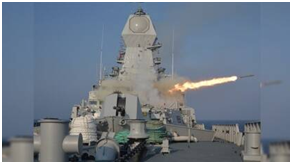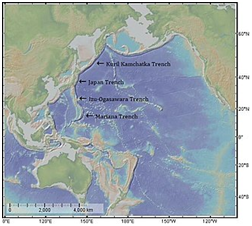POLITY AND GOVERNANCE
1. NATURAL JUSTICE AND PRINCIPALS OF PROPORTIONALITY
TAGS: GS-II- POLITY AND CONSTITUTION
THE CONTEXT: A recent ruling of the Supreme Court brought out the issues of Natural Justice and Proportionality to the surface.
THE EXPLANATION:
Natural justice is also known as universal justice, substantial justice, or fair play in action.
It is an essential concept of divine law, which is based on the law of equity.
Principles of Natural Justice:-
The main principles of natural justice are based on these two legal maxims:
- Nemo judex in causa sua – It means no one shall be a judge in his own case.
- Audi alteram partem – It means both parties/sides must be heard. No man should be condemned unheard.
Prerequisites of Natural Justice:-
- Absence of bias, interest, or prejudice: the judge should be neutral, impartial, and free from bias is the first and foremost prerequisite of natural justice.
Types of Bias:
- Pecuniary bias – It concerns a financial interest in the subject matter.
- Personal bias – A judge may be a relative, friend, or associate of a party.
- Official bias – When a judge has a general interest in the subject matter.
Maneka Gandhi vs Union of India, 1978
- It is well established in the case that even when there is no specific law or provision in a statute or rules made for showing cause against the action made, which affects the right of any individual, the duty to give a reasonable opportunity to be heard will be implied from nature.
- The principles of natural justice are not only binding on all courts but also on judicial bodies and quasi-judicial authorities.
Exceptions to the Principle of Natural Justice:-
- Where a statute or act expressly excludes or a particular provision of it excludes the applicability of the rule.
- Where the action is legislative in nature.
- Where the doctrine of necessity applies.
- Doctrine of necessity applies: If a decision is to be made urgently on shorter notice, then the rule may be excluded.
- Where facts are admitted or undisputed, then there is no need to call the party again for readmitting the admitted facts. The court can proceed further with admissions made.
- Where an enquiry is confidential, then there can be ignorance of the principles of natural justice.
- Where preventive action is to be taken.
- For example section 144 CrPC, where immediate action is required, and no reasonable or due time can be given to the other party.
- Where urgent action is necessary for a government policy decision.
Principals of Proportionality:-
- The principle requires that the decision or action must be proportionate to the objective it seeks to achieve.
- It means employed to achieve the objective must be no more than necessary to achieve it, and the harm caused by the decision or action must not be excessive in relation to the benefit gained.
- The validity of the claim of involvement of national security considerations must be assessed on the test of whether there is material to conclude that the non-disclosure of information is in the interest of national security.
- Courts can assess the validity of public interest immunity claims based on the “structured proportionality standard”.
SOCIAL ISSUES
2. WHAT IS HIKIKOMORI?
TAGS: GS-II- SOCIAL ISSUES
THE CONTEXT: A new phenomenon of Isolation known as ‘Hikikomori’ or ‘Shut-ins’ is rapidly spreading in Japan – leading to nearly 1.5 million Japanese people of working age living as social recluses, revealed by a government survey. According to the survey, around a fifth of the isolation cases have been cited to the Covid-19 pandemic.
THE EXPLANATION:
About Hikikomori:
- The term Hikikomori was coined in Japan in the 1990s to describe young adults who had withdrawn from society and remained isolated in their homes for extended periods.
- It is not recognized as a clinical diagnosis but is rather a social phenomenon that affects people of all ages.
What is the factor behind Isolation?
- Several factors have contributed to the high prevalence of hikikomori in Japan. The country’s highly competitive and demanding education system is one of the key factors. Many young people in Japan face intense academic pressure to succeed in school and secure good jobs, leading to high levels of stress and anxiety.
- As per government survey, the most common reason respondents gave for their social withdrawal was “quitting jobs”. This was closely followed by the pandemic, which was cited as the main reason by 18 percent of recluses aged 15-39 and 20 percent of those aged 40-64.
- The traditional Japanese family structure has also played a role. In Japan, there is a strong emphasis on filial piety or respect for one’s parents and elders. This has led to a culture in which children often feel a sense of obligation to care for their parents in old age, which can cause feelings of guilt and anxiety.
- Additionally, Japan’s work culture is notorious for being intense and all-consuming. Long working hours, high levels of stress, and limited opportunities for career advancement can cause burnout and contribute to the prevalence of hikikomori.
What are the Consequences of Hikikomori?
- The consequences of hikikomori can be severe, both for individuals and for society as a whole. Hikikomori can lead to social Isolation, a lack of employment opportunities, and financial hardship. It can also result in mental health issues such as depression and anxiety disorders.
- The Japanese government has recognized the problem of hikikomori and has implemented several initiatives to address it. These initiatives include counselling services, support groups, and financial assistance for individuals and families affected by hikikomori.
HEALTH ISSUES
3. SQUIRRELPOX VIRUS IN WALES
TAGS: GS-II- HEALTH ISSUES
THE CONTEXT: Red squirrels are one of Britain’s most iconic species, and yet, they are under threat from a virus that causes a fatal disease known as squirrelpox. The virus is thought to have originated in North America and was accidentally introduced to the UK by grey squirrels. It is a major threat to the red squirrel population in Wales, where numbers have declined dramatically in recent years.
THE EXPLANATION:
- Grey squirrels are the usual carriers of SQPV (Squirrelpox virus), and although they are immune to the disease, they can still spread the virus to red squirrels through physical contact or contaminated food sources.
Anecdotal Evidence of Resistance
- Despite the devastating effects of the virus, there is some good news. There is anecdotal evidence to suggest that some red squirrels have developed resistance to squirrelpox.
- In Cumbria, there have been reports of healthy red squirrels with antibodies to the virus, which indicates that they have survived an infection and built up immunity.
Impact of Squirrelpox on Red Squirrels
- Squirrelpox has a mortality rate of 100% for untreated infected squirrels in the wild, and infected squirrels typically die within four to five days.
- The virus causes cuts, blisters, and growths on the skin, which can be painful and debilitating for the squirrels. Once infected, red squirrels can take up to three weeks to die.
Efforts to Protect Red Squirrels
- There have been calls for the Welsh government to fund vaccine research to protect red squirrels from squirrelpox. A petition signed by nearly 11,000 people was submitted to the government, but so far, no action has been taken. Despite this, there are still efforts being made to protect red squirrels in Wales.
Restoring Red Squirrels in Ceredigion
- A project is underway to restore red squirrels in Ceredigion, where numbers remain small. The project involves trapping grey squirrels and replacing them with red squirrels in the hope that the red squirrel population will grow. However, this project is only one of many, and more work needs to be done to protect red squirrels in other parts of Wales.
SCIENCE AND TECHNOLOGY
4. EXTENDED RANGE ANTI SUBMARINE ROCKET (ER-ASR)
TAGS: GS-III- SCIENCE AND TECHNOLOGY
THE CONTEXT: Recently, the Extended Range Anti-Submarine Rocket (ER-ASR) was successfully test-fired for the first time.
THE EXPLANATION:
About Extended Range Anti-Submarine Rocket:-
- The ER-ASR was designed by the Pune-based Armament Research and Development Establishment (ARDE) and the High Energy Materials Research Laboratory (HEMRL) of the DRDO.
- It is designed to intercept submarines at specific depths.
- Its rocket system will be deployed in anti-submarine operations.
- It will be fired from an indigenised rocket launcher mounted onboard various Indian naval ships.
- ER-ASR can be fired in single or in salvo mode depending on the tactical mission requirements.
- The maiden successful test from the ship is a step towards enhancing the capability of the Indian Navy in anti-submarine warfare and towards achieving ‘AtmaNirbharta’ in defence.
- ER-ASR has been designed to replace the existing Russian-origin Rocket Guided Bombs (RGBs) which are already fitted in ships.
- While the RGB has a range of five kilometres, the ER-ASR can achieve a range of over eight kilometres.
PLACES IN NEWS
5. IZU-OGASAWARA TRENCH
TAGS: PRELIMS PERSPECTIVE
THE CONTEXT: The Izu–Ogasawara Trench is an oceanic trench located in the western Pacific Ocean. It is known for being one of the deepest points in the world’s oceans. Here, the deepest ever fish was filmed, breaking the previous record of filming a fish swimming in the Mariana Trench.
THE EXPLANATION:
Depth and Location
- The Izu–Ogasawara Trench is also known as the Izu–Bonin Trench. It is some 9,780 meters (32,087 feet) deep. This oceanic trench is an extension of the Japan Trench and is composed of two trenches: the Izu Trench, located in the north, and the Bonin Trench, located in the south, west of the Ogasawara Plateau.
- The Izu–Ogasawara Trench is located in the western Pacific Ocean, southeast of Japan. It runs parallel to the Mariana Trench, which is the deepest point in the world’s oceans at approximately 10,935 meters (35,876 feet) deep.
Marine Life in the Trench
- Despite the extreme depths of the Izu–Ogasawara Trench, unique marine life has been found in this region. In 2019, the Minderoo-UWA Deep Sea Research Centre led a two-month expedition to explore the trench’s depths. During the expedition, the deepest fish ever caught on camera was filmed swimming at a depth of 8,336 meters (27,373 feet) in the trench. This juvenile snail fish is one of only two fish that have been collected from a depth greater than 8,000 meters.
- The slightly warmer water in the Izu–Ogasawara Trench is believed to be responsible for the survival of fish at such extreme depths. Scientists have also discovered other unique marine life forms in the trench, including the Xenophyophore Occultammina, which was first discovered at a depth of 8,260 meters (27,100 feet).
Significance of the Trench
- The Izu–Bonin–Mariana Arc system, which includes the Izu and Bonin Islands, is created by the subduction of the Pacific Plate beneath the Philippine Sea Plate in the Izu–Ogasawara Trench. This process is responsible for creating the unique geological features and marine life in the region.
- The Izu–Ogasawara Trench is also significant for its research potential. Professor Jamieson, the founder of the Minderoo-UWA Deep Sea Research Centre, led the expedition to the trench in 2019 to study the effects of extreme ocean depths on marine life. The research conducted in this trench can help us understand more about the ocean’s depths and the unique ecosystems that exist in these extreme environments.

